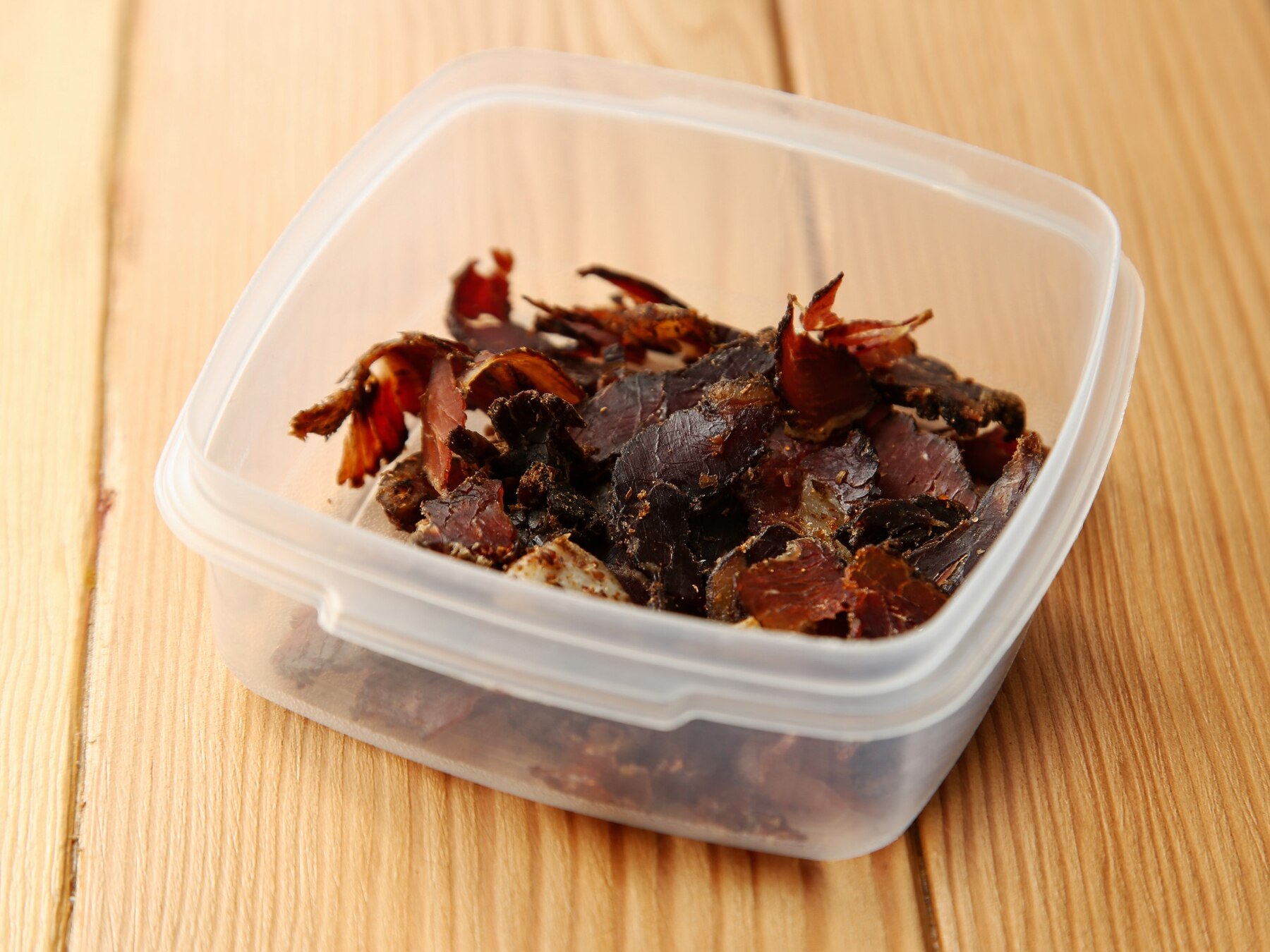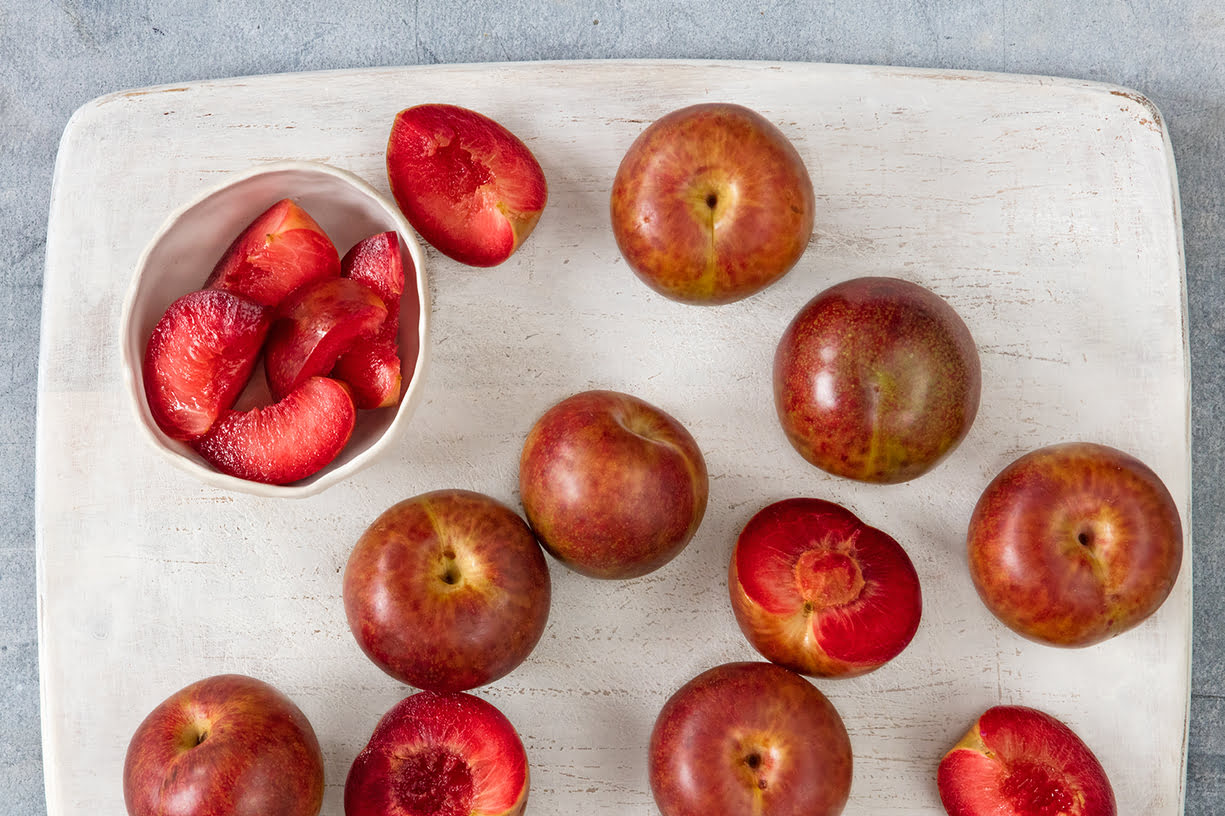

Articles
How To Store Gooseberries
Modified: December 7, 2023
Learn the best methods for storing gooseberries in this informative article. Find out how to preserve their freshness and taste for longer periods.
(Many of the links in this article redirect to a specific reviewed product. Your purchase of these products through affiliate links helps to generate commission for Storables.com, at no extra cost. Learn more)
Introduction
Gooseberries are delightful fruits that are known for their tangy flavor and vibrant colors. With their high vitamin C content and antioxidant properties, gooseberries are not only delicious but also nutritious. Whether you grow your own gooseberries or purchase them from a local farmer’s market, knowing how to properly store them is crucial to preserve their freshness and extend their shelf life.
In this article, we will guide you through the process of storing gooseberries to ensure they stay fresh for as long as possible. From choosing and harvesting the perfect gooseberries to exploring various storage methods such as freezing, canning, and drying, we will provide you with the knowledge you need to savor these delectable fruits all year round.
So let’s dive in and discover the best ways to store gooseberries!
Key Takeaways:
- Properly storing gooseberries is crucial for preserving their freshness and flavor. Whether refrigerating, freezing, canning, or drying, there are various methods to enjoy these tangy fruits year-round.
- Choosing ripe, firm berries and preparing them carefully is the first step to successful gooseberry storage. Regular inspection, proper labeling, and experimenting with recipes can enhance the longevity and enjoyment of these delightful fruits.
Read more: How To Grow Gooseberries From Seed
Choosing and Harvesting Gooseberries
When it comes to choosing gooseberries for storage, it’s important to select berries that are ripe yet firm. Look for berries that have a vibrant color, whether it’s green, yellow, or red, depending on the variety. Avoid selecting gooseberries that are overly soft or have blemishes or mold on the skin.
When harvesting gooseberries from your garden or purchasing them, handle them with care to prevent bruising. Gently pluck the berries from the stem, being careful not to squeeze or crush them. It’s advisable to wear gardening gloves to protect your hands from any thorns on the gooseberry bushes.
If you are growing your own gooseberries, it’s essential to harvest them at the right time. Gooseberries can be harvested when they reach their desired color and size. Generally, gooseberries are ready to be picked in late spring or early summer. However, it’s recommended to pick a few berries and taste them to determine if they are sweet enough for your liking. Remember that different varieties of gooseberries have varying levels of sweetness.
For optimal storage, harvest the gooseberries in the morning when they are cool and not exposed to direct sunlight. This helps to retain their freshness and flavor. It’s worth noting that gooseberries are delicate fruits and can spoil quickly if not handled properly.
Now that we have covered the basics of choosing and harvesting gooseberries, let’s move on to the next step: preparing the gooseberries for storage.
Preparing Gooseberries for Storage
Before storing your gooseberries, it’s important to properly prepare them to ensure their longevity. Here are some steps to follow:
- Wash the gooseberries: Start by rinsing the gooseberries under cold running water to remove any dirt or debris. Gently rub the berries with your fingers to ensure they are clean. Be careful not to bruise or damage the berries during this process.
- Remove any stems and leaves: Pluck off any stems or leaves that are still attached to the gooseberries. This helps prevent moisture accumulation and potential mold growth.
- Sort the berries: Examine the gooseberries and remove any overripe or damaged berries. Separate them from the healthy berries to prevent contamination.
- Dry the gooseberries: Pat the gooseberries dry with a clean kitchen towel or paper towel. Ensuring they are dry helps prevent the growth of mold or bacterial spoilage.
By following these simple steps, you are now ready to store your prepared gooseberries using various methods. In the next sections, we will explore different storage options, including storing fresh gooseberries, freezing, making preserves, canning, and drying.
Let’s dive into each method and learn how to properly store gooseberries to enjoy their deliciousness throughout the year.
Storing Fresh Gooseberries
If you plan to consume your gooseberries within a few days, storing them in a cool and dry place is the best option. Here’s how to store fresh gooseberries:
- Refrigeration: Place your cleaned and dried gooseberries in a breathable container, such as a perforated plastic bag or a plastic container with air vents. This helps to maintain the appropriate moisture levels and prevent moisture buildup. Keep the gooseberries in the refrigerator’s crisper drawer, which will provide the cool and slightly humid environment they need. Fresh gooseberries stored in the refrigerator can stay fresh for up to a week.
- Avoid washing in advance: If you are not going to consume the gooseberries immediately, it is best to avoid washing them before storing. The presence of moisture can accelerate spoilage. Wait to wash them right before you plan to use them.
- Check regularly: Periodically check your stored gooseberries for any signs of spoilage. Remove any berries that have softened, shriveled, or developed mold, as they may contaminate the rest of the batch.
Storing fresh gooseberries in the refrigerator is a convenient way to keep them fresh for a short period. However, if you want to store gooseberries for a longer duration, freezing or preserving them might be a better option.
Next, let’s explore the process of freezing gooseberries to extend their shelf life and retain their flavor and nutritional value.
Freezing Gooseberries
Freezing gooseberries is an excellent way to preserve their freshness and extend their shelf life for several months. Follow these steps to freeze gooseberries properly:
- Prepare the gooseberries: Wash the gooseberries and remove any stems or leaves. Sort through the berries and discard any overripe or damaged ones.
- Blanch the gooseberries: Blanching is an optional step that helps to preserve the color and texture of the gooseberries. Bring a pot of water to a boil and carefully add the gooseberries. Let them boil for 1-2 minutes, then transfer them to an ice bath to cool rapidly. Drain the gooseberries well.
- Spread on a baking sheet: Arrange the gooseberries in a single layer on a baking sheet lined with parchment paper. Make sure the berries are not touching each other to prevent them from freezing together in a clump.
- Flash freeze: Place the baking sheet with the gooseberries in the freezer and let them freeze for a few hours until they are firm and individually frozen. This process, known as flash freezing, prevents the berries from sticking together during storage.
- Transfer to a freezer-safe container: Once the gooseberries are frozen, transfer them to airtight freezer-safe containers or freezer bags. Label the containers with the date and contents for easy identification.
- Store in the freezer: Place the frozen gooseberries in the freezer and store them at a temperature below 0°F (-18°C). Properly frozen gooseberries can retain their quality for up to 12 months.
When you’re ready to use the frozen gooseberries, simply remove the desired amount from the freezer and thaw them in the refrigerator or at room temperature. They can be used in various recipes, such as pies, jams, smoothies, or desserts.
Now that you know how to freeze gooseberries, let’s move on to another fantastic storage option: making delicious gooseberry preserves.
Store gooseberries in the refrigerator in a perforated plastic bag to maintain their freshness. They can last for up to two weeks when stored this way.
Read more: How To Store Store-Bought Bread
Making Gooseberry Preserves
Preserving gooseberries allows you to enjoy their tangy goodness throughout the year. Making gooseberry preserves is a great way to capture their flavor and create a sweet and tart spread for your toast, pastries, or desserts. Here’s how to make gooseberry preserves:
- Prepare the gooseberries: Wash the gooseberries and remove any stems or leaves. Sort through the berries, discarding any damaged or overripe ones.
- Cook the gooseberries: Place the cleaned berries in a large saucepan or preserving pan. Add a small amount of water and simmer gently over medium heat until the berries are soft and starting to break down. Stir occasionally to prevent sticking and burning.
- Add sweetener: Once the gooseberries are cooked, add sugar or a natural sweetener of your choice to taste. The amount of sweetener needed will depend on the tartness of the gooseberries and your personal preference. Stir well until the sugar has dissolved.
- Add flavorings (optional): Enhance the flavor of your gooseberry preserves by adding spices or other flavorings such as vanilla, cinnamon, or grated orange zest. Experiment with different combinations to create your preferred taste profile.
- Simmer and thicken: Continue simmering the mixture over low heat until it thickens to your desired consistency. This can take anywhere from 20 minutes to an hour, depending on how thick you want your preserves to be. Stir frequently to prevent scorching.
- Sterilize jars: While the gooseberry preserves are cooking, sterilize your canning jars and lids in boiling water. This ensures that the jars are clean and free from any bacteria that could cause spoilage.
- Fill and seal the jars: Once the gooseberry preserves have reached the desired thickness, carefully fill the sterilized jars, leaving some headspace at the top. Wipe the rims clean, ensure the lids are tightly secured, and process the filled jars in a water bath canner for the recommended amount of time.
- Cool and store: After processing, remove the jars from the canner and let them cool completely. Check that the lids are sealed properly (they should not pop when pressed) before storing the gooseberry preserves in a cool, dark place.
Your homemade gooseberry preserves can be enjoyed for up to a year if stored properly. Spread them on toast, swirl them into yogurt, or use them as a filling for cakes and pastries. The possibilities are endless!
Now that you have mastered the art of making gooseberry preserves, let’s explore another storage method: canning.
Canning Gooseberries
Canning gooseberries is a popular preservation method that allows you to store them for an extended period while retaining their flavor and texture. Canning is an excellent option if you have a bountiful harvest or want to store gooseberries in larger quantities. Follow these steps to can gooseberries:
- Prepare the gooseberries: Wash the gooseberries thoroughly and remove any stems or leaves. Sort through the berries, discarding any damaged or overripe ones.
- Sterilize the jars: Place your canning jars and lids in boiling water or run them through a dishwasher cycle to sterilize them. This step ensures that the jars are clean and free from bacteria that could cause spoilage.
- Prepare the canning syrup: In a saucepan, prepare a canning syrup by dissolving sugar in water. The ratio of sugar to water will depend on your preference for sweetness. For lighter syrup, use 1 part sugar to 2 parts water. For a heavier syrup, use 2 parts sugar to 1 part water.
- Heat the syrup: Bring the syrup to a gentle boil, stirring until the sugar is completely dissolved. Keep the syrup warm while you prepare the gooseberries.
- Pack the gooseberries: Fill the sterilized jars with the prepared gooseberries, leaving approximately 1/2 inch of headspace at the top. Gently shake the jar to remove any air bubbles and adjust the berries if necessary.
- Add the syrup: Pour the warm syrup over the packed gooseberries, ensuring that they are fully submerged. Leave the appropriate headspace as recommended in your canning recipe.
- Seal the jars: Wipe the jar rims clean and place the sterilized lids on top. Secure them with the jar bands, tightening them just until finger tight. This allows for proper air circulation during the canning process.
- Process the jars: Place the filled and sealed jars in a water bath canner, ensuring that they are fully submerged in water. Process the jars according to the recommended processing time for gooseberries, adjusting for altitude if necessary. Use the appropriate processing time as specified in your canning recipe.
- Cool and store: After processing, carefully remove the jars from the canner and place them on a towel-lined surface. Allow the jars to cool completely. As they cool, you will hear a popping sound, indicating that the jars have properly sealed. Store the sealed jars in a cool, dark place.
Canned gooseberries can be stored for up to a year, providing you with a supply of delicious and versatile berries. Whether you use them in pies, cobblers, or as a topping for yogurt, you’ll enjoy the taste of summer all year round!
Now that you have learned how to can gooseberries, let’s explore another storage method: drying.
Drying Gooseberries
Drying gooseberries is a traditional method of preserving them that concentrates their flavor and creates a delightful chewy texture. Dried gooseberries make for a delicious and nutritious snack or can be used in a variety of recipes. Here’s how to dry gooseberries:
- Prepare the gooseberries: Wash the gooseberries thoroughly and remove any stems or leaves. Sort through the berries, discarding any damaged or overripe ones.
- Slice or leave whole: You have the option to slice the gooseberries in half or leave them whole for drying. Slicing the gooseberries helps to speed up the drying process and exposes more surface area.
- Pre-treat (optional): Some people prefer to pre-treat the gooseberries with a solution of lemon juice or ascorbic acid to prevent browning and preserve their color. This step is optional.
- Arrange the gooseberries: Place the prepared gooseberries on a drying rack or a baking sheet lined with parchment paper. Make sure to leave enough space between the berries for proper air circulation.
- Dry the gooseberries: Place the gooseberries in a well-ventilated area or use a food dehydrator set to the appropriate temperature (around 135°F or 57°C). Allow the gooseberries to dry for several hours to a few days, depending on the desired level of dryness. The gooseberries are ready when they are leathery and no longer sticky to the touch.
- Store the dried gooseberries: Once the gooseberries are completely dry, transfer them to airtight containers, such as glass jars or resealable bags. Store them in a cool, dark place to maintain their flavor and quality. Properly dried gooseberries can last for several months.
Dried gooseberries are a versatile ingredient that can be enjoyed on their own as a snack or used in various recipes. They add a burst of flavor and chewy texture to granola bars, trail mixes, baked goods, and savory dishes like stews or pilafs.
Now that you have learned how to dry gooseberries, let’s move on to some additional tips for long-term gooseberry storage.
Tips for Long-Term Gooseberry Storage
To ensure the best possible storage for your gooseberries, here are some additional tips to keep in mind:
- Inspect and sort regularly: Regularly inspect your stored gooseberries for signs of spoilage, such as mold, softening, or discoloration. Remove any spoiled berries immediately to prevent them from contaminating the rest.
- Label and date: When storing gooseberries using different methods, such as freezing, canning, or drying, it’s crucial to label and date the containers. This helps you keep track of their freshness and ensures you use the oldest ones first.
- Store in appropriate conditions: Gooseberries should be stored in a cool, dark, and well-ventilated place. Excessive heat, humidity, or exposure to direct sunlight can lead to spoilage and loss of flavor. Avoid storing them near strong-smelling foods, as gooseberries can absorb odors easily.
- Use proper containers: Choose storage containers that are suitable for the specific storage method. Whether it’s airtight containers for refrigeration, freezer-safe bags for freezing, or sterilized jars for canning, using the right containers helps protect the gooseberries from moisture, air, and contaminants.
- Rotate your stock: If you have a large supply of gooseberries, make sure to use the oldest batch first. By rotating your stock, you can prevent spoilage and ensure that none of your delicious gooseberries go to waste.
- Consider vacuum sealing: Vacuum-sealing your gooseberries can provide an extra layer of protection against moisture and prolong their shelf life. This method is particularly effective for frozen gooseberries.
- Experiment with recipes: Gooseberries are incredibly versatile, so don’t be afraid to get creative in the kitchen. Explore different recipes and incorporate gooseberries into jams, pies, sauces, or even savory dishes. This way, you can enjoy the unique flavor of gooseberries throughout the year.
By following these tips, you can maximize the shelf life of your gooseberries and enjoy their delightful flavor and nutritional benefits for an extended period.
Now that you have a wealth of knowledge on storing gooseberries, you can confidently incorporate them into your culinary endeavors throughout the year. Enjoy the tangy sweetness of these delicious fruits whenever you desire!
If you have any further questions, feel free to ask. Happy gooseberry storage!
Read more: How To Store Basil From Grocery Store
Conclusion
Properly storing gooseberries is essential to preserve their freshness, flavor, and nutritional value. Whether you grow your own gooseberries or purchase them, understanding the best storage methods will allow you to enjoy these tangy fruits long after the harvest season has passed.
In this comprehensive guide, we discussed various methods for storing gooseberries, including refrigeration, freezing, making preserves, canning, and drying. Each method offers its own benefits and allows you to enjoy gooseberries in different forms throughout the year.
When selecting gooseberries for storage, choose ripe yet firm berries with vibrant colors. Harvest them carefully, handling with gentle hands to avoid any damage. Preparing the gooseberries by washing, removing stems and leaves, and sorting them ensures that you are starting with the freshest and best-quality berries.
From there, you can store fresh gooseberries in the refrigerator for short-term use or experiment with freezing, making preserves, canning, or drying methods for long-term storage. Each method offers a unique way to savor the flavor of gooseberries and add them to a variety of recipes.
Remember to regularly check your stored gooseberries for any signs of spoilage and promptly remove any spoiled berries to prevent them from affecting the others. Label and date your stored gooseberries to keep track of their freshness and use them in a first-in, first-out manner.
By following the tips provided in this article, you can extend the shelf life of your gooseberries and enjoy their delightful taste throughout the year. Whether you’re adding them to pies, making jams, or using them in savory dishes, gooseberries offer a unique and tangy flavor that will enhance your culinary creations.
So go ahead and embrace the joy of storing gooseberries. From fresh, tangy bites to luscious preserves and dried treats, you can relish the taste of gooseberries all year long. Happy storing and enjoy the scrumptious delights that gooseberries bring!
Frequently Asked Questions about How To Store Gooseberries
Was this page helpful?
At Storables.com, we guarantee accurate and reliable information. Our content, validated by Expert Board Contributors, is crafted following stringent Editorial Policies. We're committed to providing you with well-researched, expert-backed insights for all your informational needs.














0 thoughts on “How To Store Gooseberries”